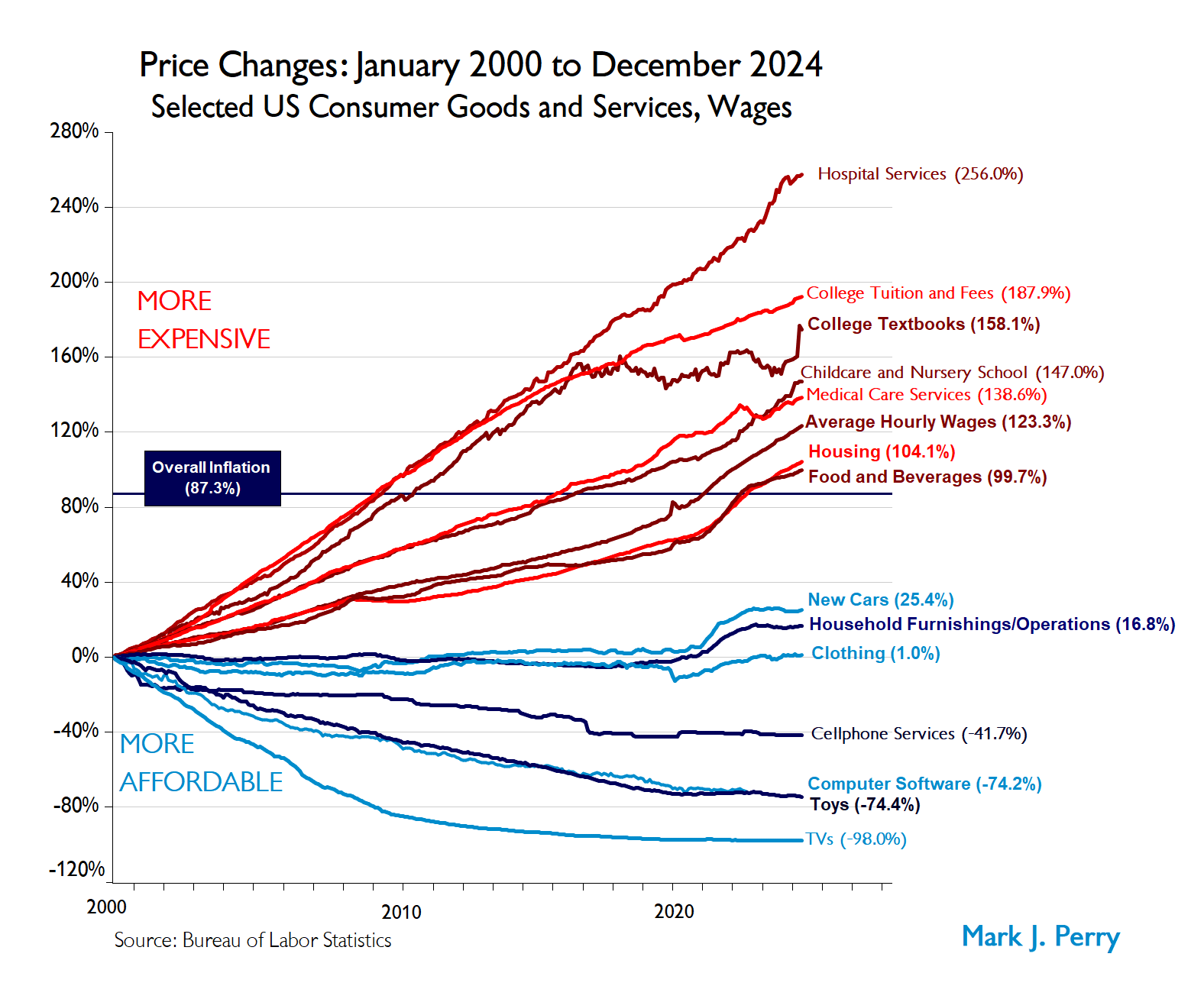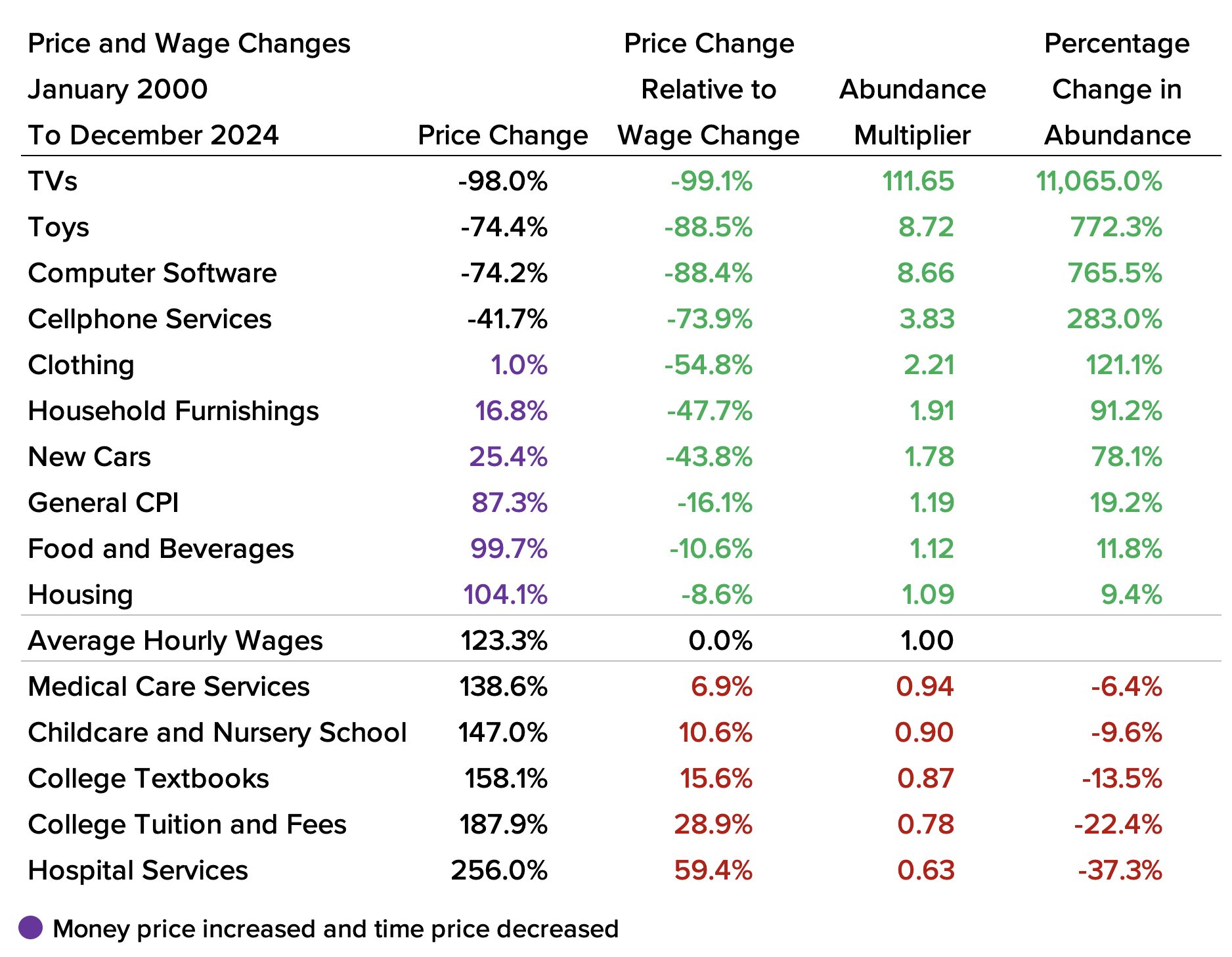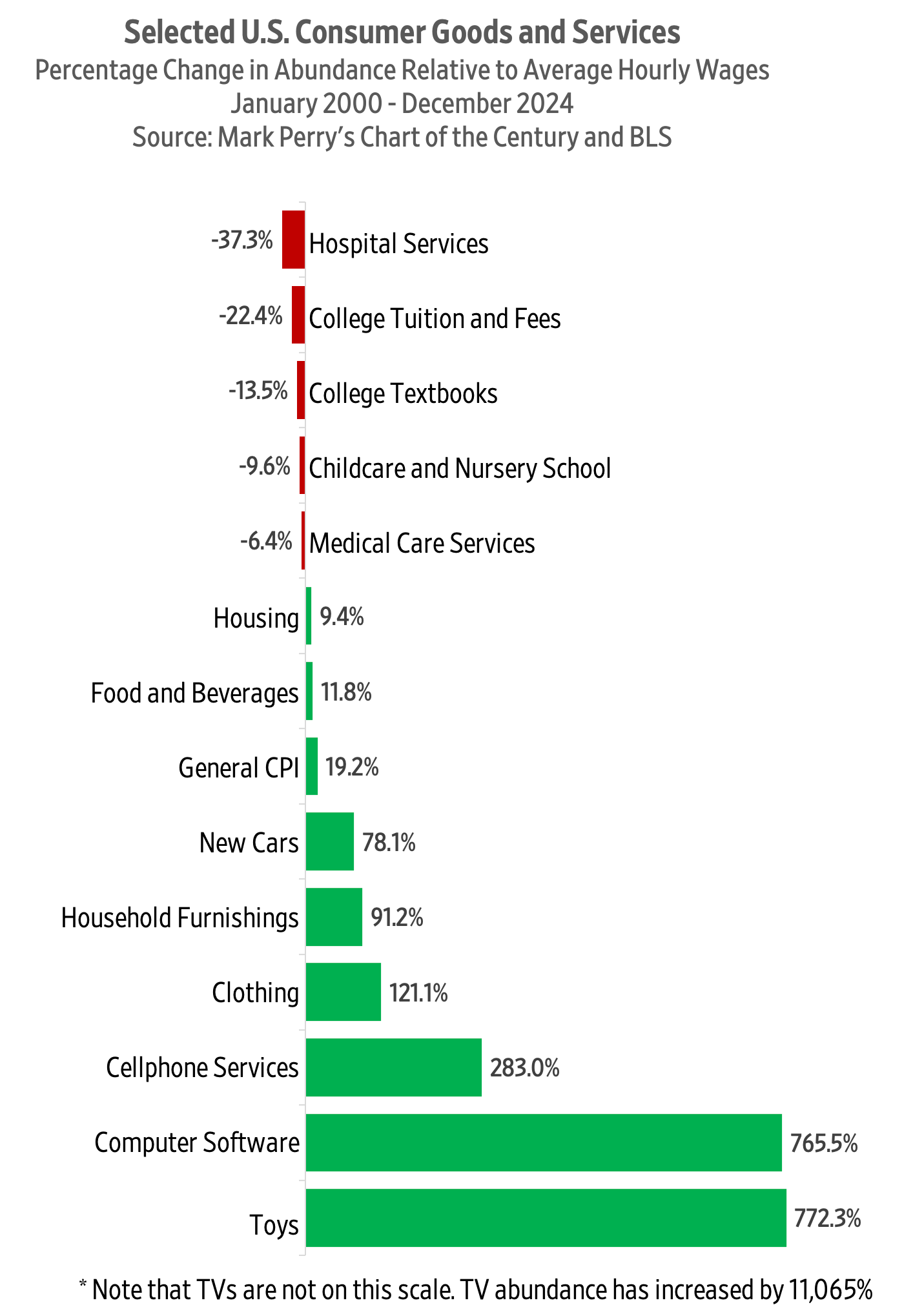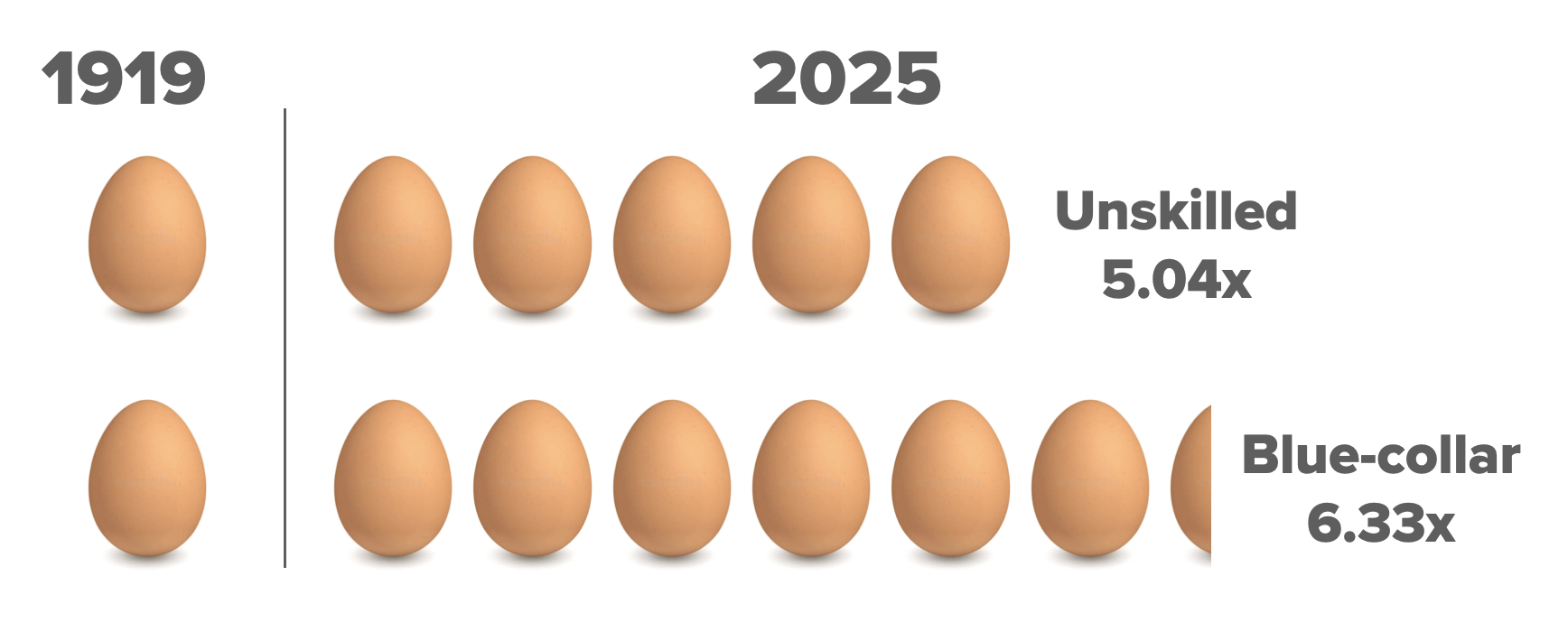Summary: Meat consumption is often seen as a measure of prosperity and well-being, but how has it changed over time? This article examines the historical trends of meat availability and affordability in England, from the medieval era to the present day. The analysis reveals a remarkable decrease in the time price of meat products and a significant surge in their abundance for both skilled and unskilled workers.
Human progress is often incremental, but many positive trends have become clearly visible over time. One of these trends is the growing abundance of food. This series of articles for HumanProgress.org will look at the affordability of food relative to wages in England between the 13th century and the present. You can read the previous article on dairy products here.
Professor Gregory Clark of the University of California, Davis, has conducted extensive research into the economic history of England. As part of his research into the condition of the working class in England, Clark has developed an extensive data set containing nominal prices of goods, and nominal wages of skilled and unskilled workers in England between the 13th and 19th centuries. Note: Clark assumes a 10-hour workday before 1720.
Using the concept of time prices developed by Marian L. Tupy and Gale L. Pooley, we can calculate the number of hours of work that someone must work to earn enough money to buy a particular food item.
In this analysis, Clark’s nominal prices of food items serve as the nominator, and nominal hourly wages, which come from Clark and from the UK’s Office of National Statistics’ Annual Survey of Hours and Earnings, serve as the denominator.
Figure 1: Food abundance from the perspective of unskilled workers in England, hours of labor
As we can see in Figure 1, a pound of beef fell from 3.05 hours of labor in the 1600s to 0.29 hours of labor in 2022. A pound of mutton fell from 3.27 hours of labor to 0.43 hours, and a pound of pork fell from 3.52 hours of labor to 0.29 hours.
Figure 2: Food abundance from the perspective of unskilled workers in England, per hour of labor
As we can see in Figure 2, an hour of work bought 0.33 pounds of beef for an unskilled worker in 1636. That rose to 3.45 pounds in 2022. Instead of 0.31 pounds of mutton, an unskilled worker got 2.32 pounds. Instead of 0.28 pounds of pork, he or she got 3.44 pounds.
Put differently, the same number of hours of work that bought 1 pound of beef in the 1600s bought 10.5 pounds of beef in 2022. Instead of 1 pound of mutton, an unskilled worker got 7.6 pounds. Instead of 1 pound of pork, he or she got 12.1 pounds.
Figure 3: Food abundance from the perspective of skilled workers in England, hours of labor
As we can see in Figure 3, for a skilled worker, a pound of beef fell from 2.14 hours of labor in the 1600s to 0.23 hours of labor in 2022. A pound of mutton fell from 2.29 hours of labor to 0.34 hours, and a pound of pork fell from 2.47 hours of labor to 0.23 hours.
Figure 4: Food abundance from the perspective of skilled workers in England, per hour of labor
As we can see in Figure 4, an hour of work bought 0.47 pounds of beef for a skilled worker in the 1600s. That rose to 4.41 pounds in 2022. Instead of 0.44 pounds of mutton, a skilled worker got 2.96 pounds. Instead of 0.41 pounds of pork, he or she got 4.39 pounds.
Put differently, the same number of hours of work that bought 1 pound of beef in the 1600s bought 9.4 pounds of beef in 2022. Instead of 1 pound of mutton, a skilled worker got 6.8 pounds. Instead of 1 pound of pork, he or she got 10.9 pounds.
Clearly, meat products became much more abundant for both skilled and unskilled workers. Moreover, note that the time price differential between unskilled laborers and skilled tradesmen has shrunk. For example, to afford a pound of pork in the 1630s, an unskilled worker would have to work 3.52 hours compared to 2.47 hours for a skilled worker, a difference of over an hour. However, in 2022, an unskilled worker would work 17.4 minutes to afford a pound of pork, and a skilled worker would work 13.8 minutes, a difference of only 3.6 minutes.
Put differently, unskilled workers have become better-off relative to their more-skilled compatriots.
Finally, the rate of growth in abundance has clearly accelerated over the last 200 years. Whereas the rate of growth in the abundance of beef, mutton and pork grew at a compounded annual rate of about 0.18% between 1636 and 1865 for an unskilled worker, it grew 0.7% between 1865 and 2022. Similarly, for a skilled worker, the compound annual growth rate increased from 0.2% before 1865 to 1.03% afterwards. Since the mid-1800s, the rate of growth of wages relative to prices has increased dramatically.







